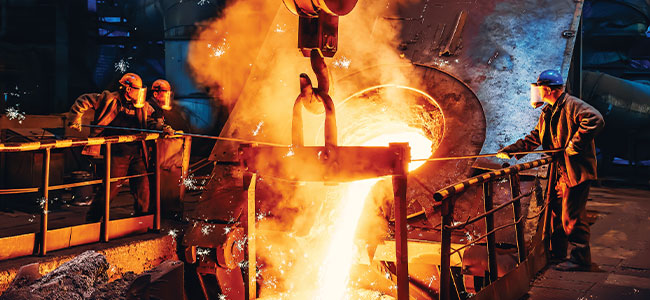
Page 3 of 3
Protecting Workers in High-Heat Industries
1. What is the average working temperature during the task?
2. What is the maximum temperature that might be reached? How often does that happen? How long does exposure at the high temperature last?
3. Does the wearer touch the hot item (conductive heat) or just work near the heat (radiant heat)?
4. How long is usual exposure time?
5. If the wearer is picking something up or holding something, how heavy is that object, and how long do they hold it? (The heavier the object, the more it compresses the fibers in the PPE fabric, leading to quicker heat transfer and a shorter time to pain.)
6. Is there moisture or splash involved? If so, how often and how much? What substance is the splash? (Will the wearer need chemical protection as well?)
7. Are there abrasion or cut hazards? (If so, need to choose a fabric that is more abrasion-resistant.)
8. What are the ambient air conditions in the facility — is normal heat stress an issue in addition to the high-heat hazard?
9. And the simplest but best question of all: What are you using now? What do you like about it, and what would you like to improve?
You Can Ask for Help
You don’t have to make this decision alone. Many vendors and suppliers have in-house safety experts on staff who can offer additional information and perspective. Some also perform on-site assessments in order to properly gauge the hazards your employees will be facing and determine the appropriate
PPE.
This article originally appeared in the February/March 2024 issue of Occupational Health & Safety.
About the Author
Mary Ann Merikoski is the Director of Product-Apparel at Chicago Protective Apparel, a division of Mechanix Wear.